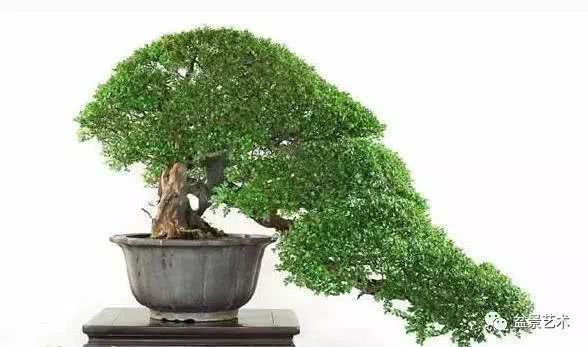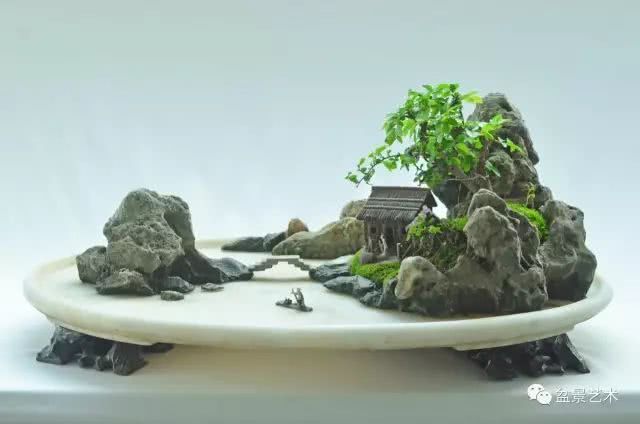The production of cliff bonsai

Cliff: the main stem of the pile landscape is longer than the bottom of the basin, which is called big cliff bonsai. The large cliff pile scene is the most difficult form of creation in modeling. First of all, it is difficult to choose a pile. In addition to all the conditions for the creation of the cliff body, the pile scene of the big cliff has several specific factors: 1. After the pile head on the basin stands up, there should be a support as an important branch of the crown. 2. Dry body bending and sagging should have ups and downs, obvious rhythm, strong changes in three-dimensional space, and avoid soft bending, big arc and serpentine walking. 3. There should be enough drooping length. 4. The distribution of branches and receptacles should be reasonable and should not hide each other. The large cliff style pays attention to the shape of the first and second supporting branches in the curling and drooping part of the pile head after rising, which requires that the main vein of the coarse branch should be basically the same as that of the drooping trunk and play a follow-up role. In the accessory pulse, it can reverse the potential, seek change, and enhance the sense of motion. It is better to change the curvature of the new stem and the original stem not in the same vertical horizontal plane, but in the three-dimensional space of front, back, left, right, upper and lower directions. in order to obtain the reasonable distribution and lighting space between the branches and supports. The ending of the big cliff pile scene is flexible. Because of the positive direction of the plant. when the tail falls to a certain length, it should be tilted upwards. It is in line with the law of growth, and at the same time, it also strengthens the change of the strength of the drooping dry body. In order to increase the thickness of the tail tip, you can also end with two branches. one principal-deputy. One strong and one weak. After shaping, the tail tip of the work is generally cut less. strengthen the tree gas of the drooping tail, while the branch support in the middle of the head should be suppressed reasonably. avoid excessive tree gas and achieve a balance with the tail tip. The big cliff tree is majestic, smart, the dry body changes strongly, and is full of rhythm and strength. When modeling, we should grasp the overall trend and take into account the overall situation. It is necessary to reasonably handle the dispute between branches and supports, and do not favor one over the other. It is necessary to give full play to the author's subjective efforts, pursue, have personality, and gradually cultivate and shape according to the established plan.
Figure 1 shows the big cliff style of mountain pines.
The shape of the dry body is strong and soft, the soft bend is combined with the hard angle, and the two continuous acute angles of the tail tip are the essence of the dry body of the whole pile, which can be achieved by cutting off the main buds and using lateral buds. The top support and the tail end are the key modeling points of the whole pile, the top support should be mainly shear, and strive for tortuous changes; the tail end should be mainly tied, with a long rhythm transition, and the forming time can be consistent.
Figure 2 is the shape of the big cliff at the end of the double branches. the pile scene makes the tail thick by interspersing the main and auxiliary veins of the tail tip, which becomes the focus of appreciation. Relatively speaking, the top support and other side supports are properly relaxed. Make the pile phase loose and tight reasonable, the key point is prominent.
Figure 3 shows the original pile phase of mountain tangerine. The floating length is 12 o cm, and the maximum dry diameter is 8 cm. This pile is the selection of the upper pile of the big cliff pile. The dry body turns and twists the space change strongly, the transition is natural, floats long foot, the original care utilization rate is high, the root is strong. All this is enough to make it a rare good pile.
Figure 4 shows the post-cut pile phase of 90'to be shaped into a large cliff according to the characteristics of the Da Nitrile cliff.
Figure 5 is a styling design. The characteristic of this styling design is to use the straight upper transverse support of the tail tip as the end of the main tip vein. Re-cultivate two right-angle Jiqu, into a serial 7-word branch shape, compared with the rolling curve of the dry body, and strive to contrast and seek characteristics in the modeling risk.
Reading and carding
- Prev

Modeling and processing of tree stump
(1) the method of processing there are two main methods of modeling processing: cutting and binding. The cutting method is the main modeling method of Lingnan bonsai, which is most suitable for tree species with strong germination, such as Fujian tea, elm, Jiuli incense, June snow and so on. The period of pruning.
- Next

A wonderful way to bond bonsai mountains and rocks
In the production process of landscape bonsai, due to the requirements of landscape performance of mountain and stone layout and rock volume, it is often necessary to properly glue several, dozens or even dozens of smaller stones together to form an integrated single peak and layer.
Related
- Wuhan Hospital Iron Tree Blooming Result Was Instantly Frightened by the Gardener Master
- Which variety of camellia is the most fragrant and best? Which one do you like best?
- What is the small blue coat, the breeding methods and matters needing attention of the succulent plant
- Dormancy time and maintenance management of succulent plants during dormancy
- Minas succulent how to raise, Minas succulent plant pictures
- What are the varieties of winter succulent plants
- How to raise succulent plants in twelve rolls? let's take a look at some experience of breeding twelve rolls.
- Attention should be paid to water control for succulent plants during dormant period (winter and summer)
- Watering experience of twelve rolls of succulent plants
- Techniques for fertilizing succulent plants. An article will let you know how to fertilize succulent plants.

